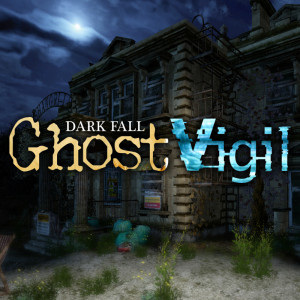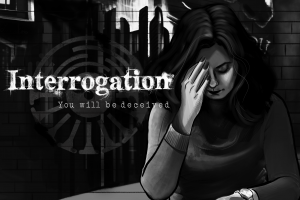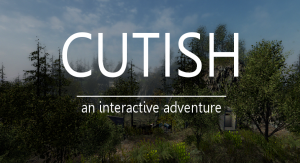Review for Solas and the White Winter

Solas and the White Winter is a third-person 3D puzzle adventure by Savepoint Studios in which players assume the role of Solas, a young Celtic girl whose father has just passed away after her mother was taken and sacrificed by the druids. Yet despite being based on such dark events, the overall tone of the game is surprisingly light as players venture out into a pristine winter setting with gently falling snowflakes through a series of five Celtic temples, each with their own puzzle type. The challenges you’ll confront are well-thought-out and executed, but the gameplay experience is quite short even with more than a little padding along the way.
The story is conveyed through a series of silent, still screenshots that take place between each temple. In truth, what is presented is actually backstory, as the events shown in these images are all flashbacks into Solas’s past. After this background introduction, Solas wakes up alone in her little wood cottage in the middle of nowhere, surrounded by snow. Stepping outside, she sees the ghostly form of her mother, who leads the way to the first temple. (Why Solas needs to go to these temples, let alone solve the puzzles inside them is never explained.) For subsequent temples, Solas is on her own and must find their entrances by herself.
Each temple is dedicated to a specific type of challenge, which is prefaced by solving the simplest version of its type to open the entrance door. For example, the first temple contains puzzles in which braziers must be lit in a specific order based on clues found elsewhere within the structure. Entering this temple requires nothing more than lighting a brazier, just to grasp the concept. The remaining buildings involve throwing levers to rotate parts of seals and statues to matching orientations, sliding blocks across ice in a Sokoban-esque fashion (except that the blocks move until they hit something), and stepping on floor panels to turn pieces of pipe in order to funnel wind to specific destinations. The fifth and final temple revisits each of these puzzle types once, although it does not mix and match their elements.
Temples consist of two to four chambers, with each chamber having its own puzzle. Solve that challenge and the door to the next room opens. The difficulty increases nicely as you progress within a given temple, although they never get unduly hard. Whenever you enter a new temple, most of which can be accessed in any order, the overall challenge level drops back down only to be built back up again toward the end. Once all the chambers in a temple are complete, a glowing beam on the roof goes out and a light appears on a plinth outside the final temple. The last destination can only be entered after all four of the other temples have been completed.
While the puzzles themselves can be quite engaging, requiring a bit of observation and thought, the trek just to get to them is not. Solas is always returned to her cottage after finishing the current location, and from there she must make her way to the next area. The uncompleted temples have glowing blue beams atop them, so it’s always easy to see where they are in the distance. However, the long stroll to get there will certainly try any player’s patience. More than one takes over ten minutes to reach, and that’s with Solas running, which she does automatically when she’s outside. With five temples to hike to, a good portion of the game’s ninety-minute play time is spent simply trying to get from place to place and feels like nothing more than filler.
There are a few environmental hazards in the wilderness that theoretically could have spiced things up. For instance, on the way to one temple there are several frozen rivers and lakes that can only be crossed by walking (easily accomplished with the press of a button) instead of running, which breaks the ice. This drowns Solas and sends her back to the last save point, represented by fire pits that she can light with her torch along the way. Another path is laden with bear traps, while yet another can bury Solas in snow with periodic avalanches. Unfortunately, despite the presence of these dangers, it doesn’t take much presence of mind to avoid them, so the journeys to the temples end up being more of a dull slog than an exciting adventure.
Solas uses a clean, low-poly art style somewhat similar to The Legend of Zelda: The Wind Waker, except even more simplified and not nearly as brightly coloured. Although the young protagonist is the only character seen during gameplay, her parents, other villagers, and some unruly druids are shown in the flashback sequences. None of them are particularly detailed, without having even eyes or mouths, but their poses manage to convey a good sense of emotion. These slideshows take on a parchment-like grain, which is appropriate since a book on Solas’s bedside table can be used to rewatch these scenes later. Strangely, despite the minimal amount of texture in the game, load times can occasionally be exceedingly long. The first time I stepped out of the cabin, I thought the game had become nonresponsive as it took the better part of a minute to load with no indication it was making any progress, just a flat grey background displayed.
There are no real standout locations anywhere along the journey, save for one temple with a large cathedral and a grand pipe organ. The exterior locales are all snow-swept landscapes with leafless trees, the occasional sheltering rocks, and the odd frozen river. The remaining temple interiors are all very similar, consisting of ancient rock rooms and doors. Only the puzzle pieces themselves really lend any variety to the different environments.
The spartan visual design also carries over to the game’s audio. There are no voices – or written dialog, for that matter – and only limited sound effects are heard, such as the crack of ice when running over it, or the stone grating of a statue being rotated. Even the music only consists of a single, melancholy tune playing gently in the background.
Solas can be guided with either a controller or the typical mouse/keyboard combination, with both methods working well. Aside from generally moving her around, just a single interact button is needed for her to manipulate objects. When she’s close to an object she can do something with, like a lever she can throw or a stone she can push, the outline of the object lights up to show it’s interactive. In most cases, hitting the interact key will have Solas automatically move into place to use the appropriate object. The pushable stones are an exception, and may require a little jockeying to get Solas into a position where she can make them slide backwards, forwards, left, or right.
Ultimately, Solas and the White Winter is a modest, unambitious game. It’s short, offers relatively few interactive sequences, includes a great deal of padding in walking from one place to another, and has a minimal aesthetic across every aspect of production. And yet for all that, it’s a pleasant, enjoyable little puzzle adventure experience with a quiet, melancholy vibe that’s perfect for a rainy (or perhaps snowy) day. With its low level of challenge and brief duration, it can make for a nice break between more demanding fare.



























